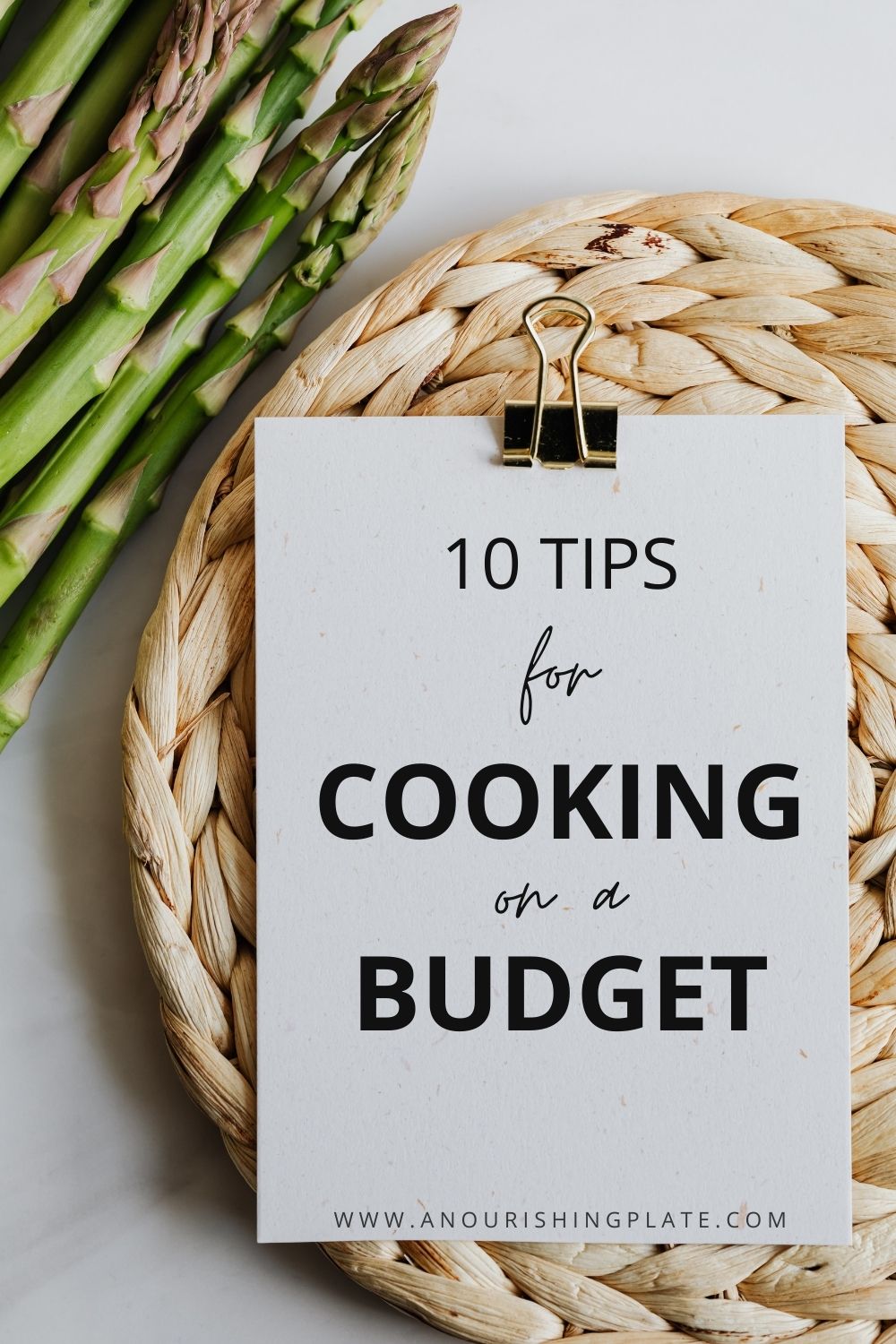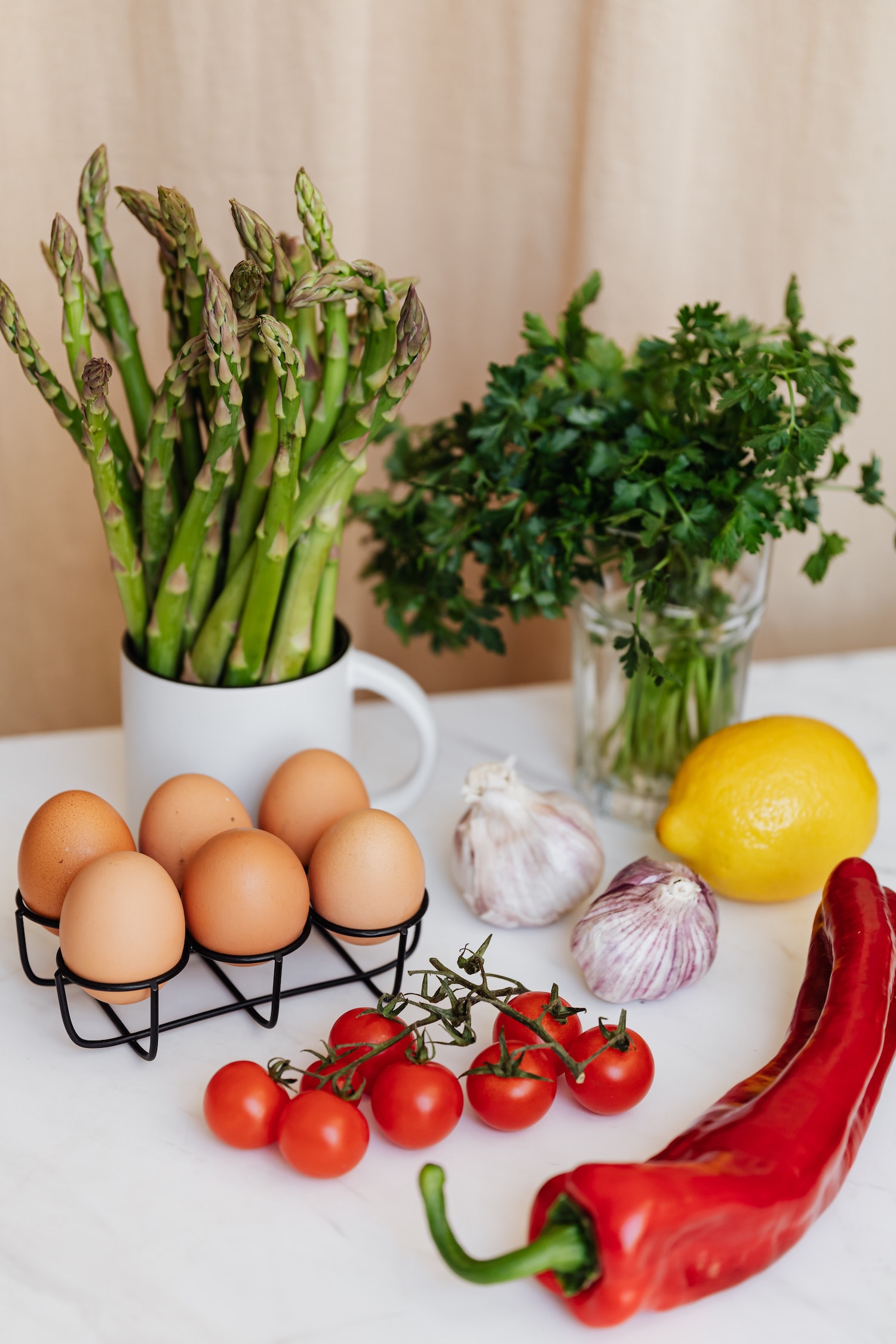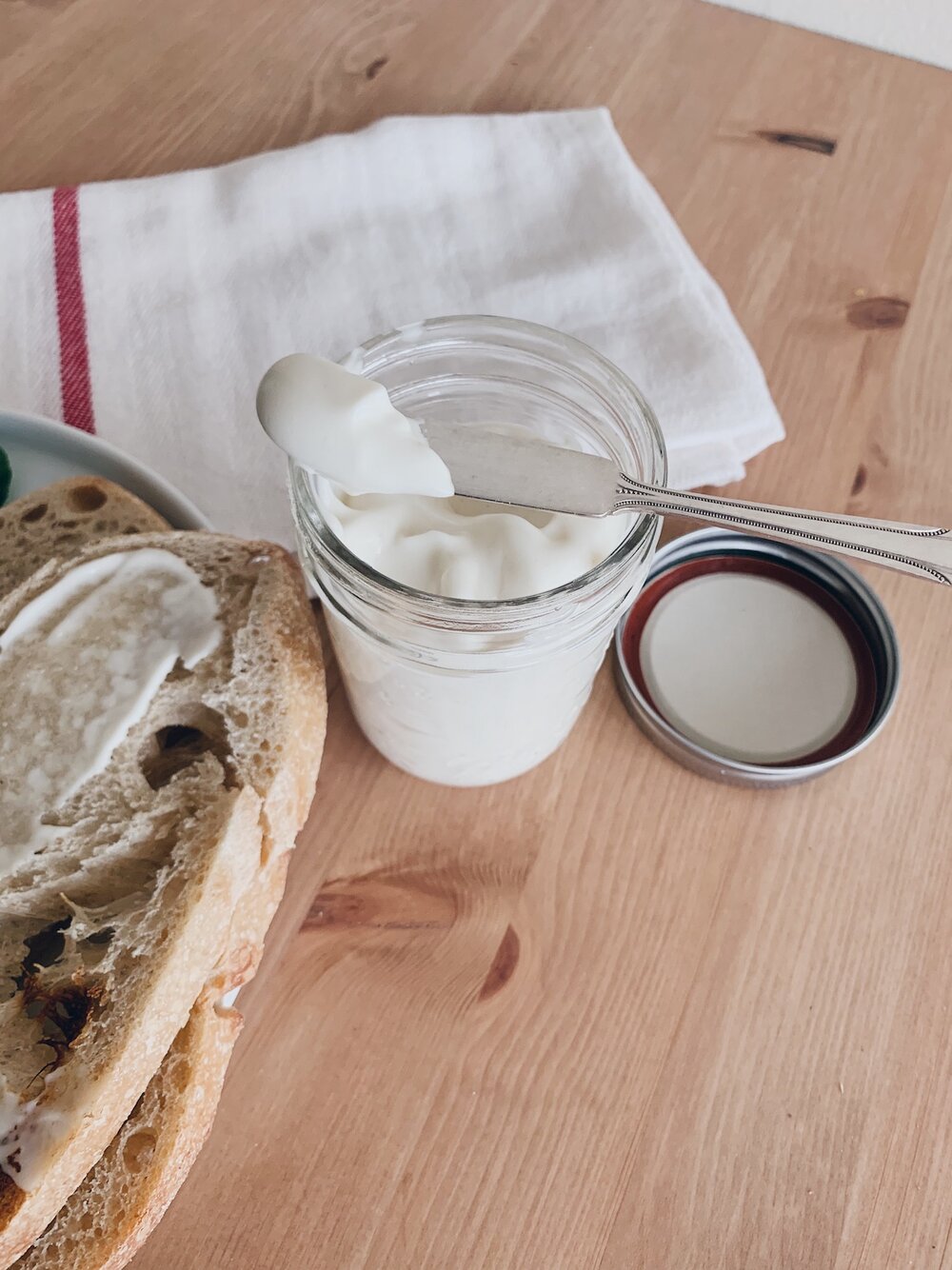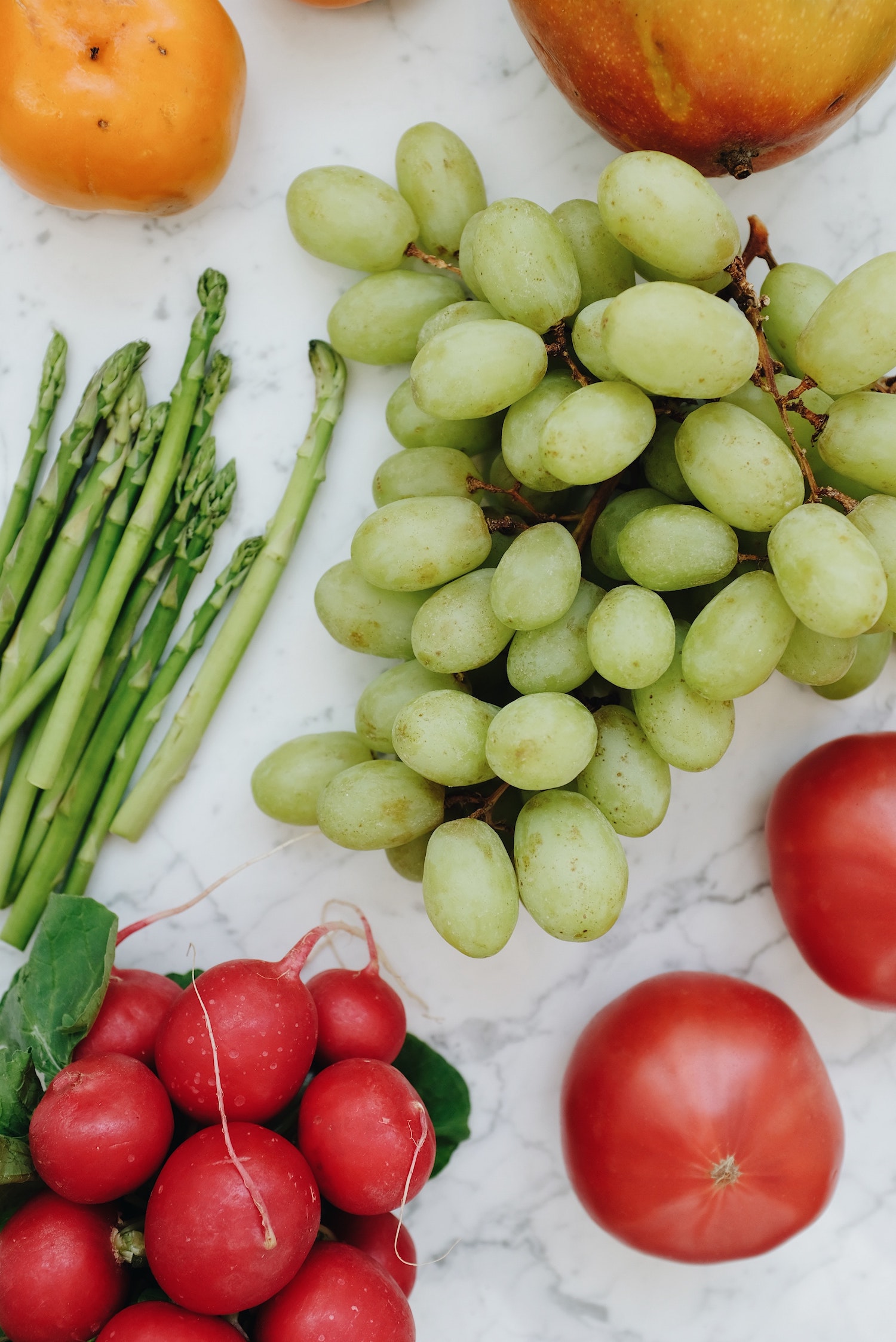10 Tips For Cooking On A Budget

When you think of cooking on a budget, you may be thinking that you’ll need to be living off of beans and rice for the unforeseeable future.
Thankfully, that’s not necessary. You can eat a variety of incredible foods on a budget. These tips are going to help you stretch your food dollars further.
How To Cook On A Budget
1. utilize the stems
Often we’re throwing these away when they could be eaten. I’m talking broccoli stems (or trunks if we’re going the tree route), stems from cauliflower, and fresh herbs.
With herbs such as cilantro and parsley, we’re usually taught to pick off the leaves and toss the rest. However, the stems have just as much flavor. If you finely dice them up, you can toss them into whatever you’re cooking for an extra burst of flavor.
Here are a few ways you can utilize the stems:
2. swap ingredients

Sometimes when we’re cooking from a recipe, it’s easy to think that we have to follow the recipe to a T, and not stray outside those lines.
Something that’s important to remember: recipes are just a starting point when you need a hit of inspiration. When cooking, they don’t need to be followed exactly, especially if you’re wanting to stay within your budget.
If you don’t have parsnips, swap them out for carrots. If the recipe calls for quinoa? Substitute rice. Say it with me: It’s okay to put your own twist on it. And it’s definitely okay to use what you already have on hand.
This is why all the recipes on our site are adaptable and provide several substitution options, so browse the recipes to help get you started.
3. substitute nuts with seeds
Nuts are notoriously known to be expensive. If it’s not in your budget this week or month, opt for seeds instead. Seeds also provide a rich taste because of their healthy fat profile.
For example, making granola that calls for nuts? Use your favorite seeds instead. Want a crunchy topping on your food? Toast (or roast) some pumpkin or sunflower seeds.
What to make: Maple Tahini Granola
4. make it from scratch
Making everything from scratch? Isn’t that going to cost a fortune? Not always. Sure, sometimes it takes a little time to make, but It’s a great way to save money, and it almost always tastes better than store-bought.
Let’s take mayo, for example, a jar of quality mayonnaise can cost anywhere from $5-7. You can make your own for about $2. Can’t have eggs? This egg-free mayo is a great alternative.
Cashew butter is another example of why making it at home is much more cost-effective, especially when you buy nuts in bulk.
Other condiments you can make are taco seasoning, vegan oyster sauce, and vegan mozzarella.

5. use frozen produce
Frozen fruits and vegetables are a great option to keep your budget low. They can also be the next best option when you want something that isn’t currently in season.
Frozen produce has been picked when the food is in season and at its ripest state. It’s then flash-frozen immediately to lock in nutrients and flavor. Aim for fresh foods when possible, and if it’s only in your budget to get frozen vegetables or fruit, that’s perfectly fine too.
6. follow the clean 15, dirty dozen guidelines
Want to buy high-quality food while still staying within your budget? Following the clean 15, dirty dozen guideline is a great way to do so.
If you’re not familiar, it’s a list that the EWG (Environmental Working Group) put out that states the 12 fruits and vegetables that are the most sprayed with pesticides, and the 15 fruits and vegetables that are sprayed with the least chemicals.
The clean 15 foods are okay to buy conventional (non-organic) and it suggests that you buy the dirty dozen foods organic when possible.

Clean 15 Foods: Avocados, sweet corn, pineapples, frozen sweet peas, onions, papayas, eggplants, asparagus, kiwis, cabbages, cauliflower, cantaloupe, broccoli, mushrooms, honeydew melon
Dirty Dozen Foods: Strawberries, spinach, kale, nectarines, apples, grapes, peaches, cherries, pears, tomatoes, celery, potatoes
FYI: The overall consensus is that eating fruit and vegetables of any variety (organic or conventional) is better than eating none at all.
7. shop from the bulk bin
This allows you to only take what you need. If you buy something that already comes in a set amount, you’ll likely have extra to use for another time, but if money is tight, you can get only the amount that you need for the time being.
8. buy dried beans and lentils instead of canned
When you’re buying dried beans and lentils instead of canned, you’re getting a lot more bang for your buck. Beans and lentils expand when cooking, so you’ll have about 4 times as much as you’d get in a can.
Plus, beans or lentils are a great addition to really stretch the meal. They’re an inexpensive way to add protein and fiber to your dishes.

9. buy what’s in season
If you’re buying a watermelon in the middle of December vs. the middle of July, you’ll see that the prices vary greatly. Not only is it going to be more expensive in December, but the flavor is going to be much less desirable.
Buying produce that’s in season is going to be more flavorful, and kinder to your wallet. Take a look at the seasonal produce guide to see what’s in season right now.
10. buy multi-purpose ingredients
Let’s say you’re cooking 5 meals at home this week. Trying to buy several different ingredients for each recipe can really add up. And yes, you’ll save more money than if you’re going out to eat, but it still may fall outside your budget.
Buy some produce that can be used in several of your dishes, but still provide different flavor profiles in each, so it doesn’t taste like you’re eating the same dish 5 times over – that’ll get old real fast.
Pro tip: Find out what produce and/or protein is on sale at your local grocery store, and plan your meals accordingly. You can also use our ingredient pairings when you need meal ideas.
Bonus Cooking Tip
11. buy it whole
If you’re using chicken for example in multiple dishes, buying a whole chicken and roasting it yourself will supply several meals from that one purchase. If you’re buying just the chicken breasts and then just the drumsticks, it’s going to cost more overall.
You’ll be able to utilize the protein and then make stock from the bones which can then be used to make soups such as creamy chicken corn chowder or freeze the broth and use it at a later time.

